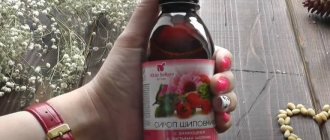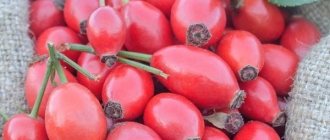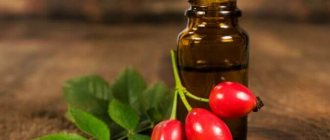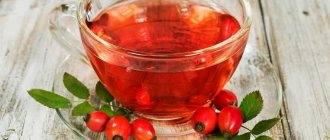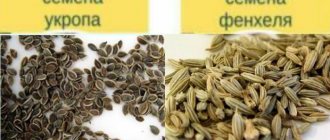In pharmaceutical practice, fruits refer to fruits of various morphological types, individual fruitlets, infructescences and their parts. The fruits are collected when ripe (sometimes in the technical ripeness phase) and dried. Some juicy fruits are processed fresh.
MINISTRY OF HEALTH OF THE RUSSIAN FEDERATION
GENERAL PHARMACOPOEIAN ARTICLE
Fruits OFS.1.5.1.0007.15
Fructus Instead of Art. GF XI
In pharmaceutical practice, fruits refer to fruits of various morphological types, individual fruitlets, infructescences and their parts. The fruits are collected when ripe (sometimes in the technical ripeness phase) and dried. Some juicy fruits are processed fresh.
External signs
Whole and crushed raw materials. The fruits are examined dry, examining them with the naked eye, using a magnifying glass (10×) or a stereomicroscope (8×, 16×, 24× and others). Juicy fruits that have changed shape during drying are examined first in dry form, and then after soaking in hot water or boiling for 5-10 minutes.
The fruit consists of a dry (dry fruit) or juicy (juicy fruit) pericarp (pericarp) and seeds enclosed in it. Dry fruits often have cavities inside - nests; the number of nests may vary. Sometimes the fruit (rose hip) is formed by an overgrown hypanthium, covering the fruitlets attached to it from the inside. Fruitlets are morphological units that form an apocarpous fruit. The following signs are of diagnostic value (for crushed raw materials, pieces of fruit are examined and characterized):
- Fruit type (morphological): monocarp, formed from a monocarpous gynoecium - single leaf, bean, juicy single drupe, dry single drupe; apocarps, formed from the apocarpous gynoecium - dry multileaf, juicy multileaf, strawberry or frag, juicy multidrupe, polynut, cynarodium; coenocarps, formed from a coenocarpous gynoecium - berry, bolls of various types, pod and pod, hesperidium or bitter orange, pumpkin, apple, coenobium, willow carp, coenocarpous polydrupe or pyrenarian, kalachik (carcerula); pseudomonocarps are formed from a pseudomonocarpous gynoecium - nut, acorn, achene, caryopsis, pseudomonocarpous drupe.
- The type of pericarp is dry (dry fruits) or juicy (juicy fruits).
- The presence of the stalk, its length, color and surface character.
- The shape and structural features of the pericarp for juicy fruits are determined after softening (ovoid, spherical, oblong, flattened, with slightly protruding longitudinal ribs, with remnants of a calyx, etc.).
- The nature of the pericarp surface (rough, wrinkled, smooth, shiny, etc.).
- The number of nests in the fruit (if any).
- Presence of essential oil channels or containers.
- Dimensions (length, thickness, diameter of the fruit) are determined using a measuring ruler or graph paper. For crushed fruits, the grinding factor is the size of the sieve holes through which the mixture of particles passes.
- The number of seeds, their shape, size, surface nature, etc. determined for juicy fruits after they have been softened and the seeds have been separated from the pulp (see General Pharmacopoeia Monograph “Seeds”).
- The presence of the stalk, its length, color and surface character (smooth, ribbed, grooved, etc.).
- The color of the pericarp is determined in daylight.
- The smell is determined by breaking or rubbing.
- Taste is determined by tasting dry raw materials or aqueous extract (only for non-poisonous objects).
Powder. Examine with the naked eye, using a magnifying glass (10×) or a stereomicroscope (8×, 16×, 24×, etc.). The color of the mixture of particles (the total mass and individual inclusions), the shape of the particles, the origin of the particles and their nature (if determined), and the presence of whole or almost whole seeds are noted. When examined under a magnifying glass or stereomicroscope, attention is paid to the pubescence of the fragments and the nature of the surface (smooth, rough, covered with glands, lentils, etc.). The smell and taste (similar to whole and crushed fruits), grinding (the size of the sieve holes through which the mixture of particles passes) are determined.
Botanical description
Young shoots are greenish-red with awl-shaped spines and bristles. The leaves are alternate, imparipinnate, with seven, less often nine, leaflets (10 - 16 cm long, 6 - 12 cm wide). The leaves are bare on both sides, oval-elongated, serrated, the stipules are long, fused with the stem.
The flowers are solitary, less often collected in groups of three to five in corymbose inflorescences surrounded by bracts. There are five sepals, they are pinnately dissected, after flowering they are directed downwards, and shortly before the fruits ripen they partially fall off. The corolla (up to 5 cm in diameter) is pink or white-pink with five free petals. The receptacle is concave, there are many stamens and pistils. The fruits are berry-shaped (18 - 20 mm long), red-orange, different in shape, with numerous hairy achenes.
Dog rose grows on slopes, forest edges, less often under the canopy of mixed and deciduous forests, along roads, and in wastelands.
Light-loving, frost-resistant plant. It blooms in May - June, the fruits ripen in August - September. Dog rose is widespread in Polesie, forest-steppe, and steppe.
Microscopy
Whole fruits. Microspecimens are prepared in accordance with the General Pharmacopoeia Monograph “Technique for microscopic and microchemical examination of medicinal plant materials and medicinal herbal preparations.” For diagnostic purposes, preparations of the pericarp (epidermis, mesocarp, endocarp), hypanthium (if present) and seeds are examined. Transverse sections and sections from the surface are prepared. If necessary, “pressed” micropreparations are prepared.
The structure of the pericarp is of diagnostic importance. There are three layers in the pericarp: the outer one is the exocarp, the middle one is the mesocarp, and the inner one is the endocarp. The endocarp in some fruits fuses with the seed coat; sometimes the endocarp is represented by mechanical tissue in the form of cells with distinct thickenings.
The following anatomical and diagnostic signs are distinguished:
- Characteristics of the epidermis: the nature of the cuticle (wax deposits on it), the shape of the epidermal cells (hypanthium, fruit, seed); tortuosity of epidermal cell walls; the nature of thickening of the walls of epidermal cells.
- Characteristics of stomata: the presence of stomata in the epidermis and their shape, size; type of stomatal apparatus, number of parastomatal cells; immersion of stomata in the epidermis; the presence of lentils in the epidermis.
- The presence and nature of trichomes (hairs), their sizes, features of their places of attachment.
- Secretory canals, laticifers, receptacles.
- The presence and nature of idioblast cells (cells containing mucus, carotenoids, calcium oxalate crystals, etc.), their size.
- The nature of the mesocarp parenchyma (shape and size of cells, uniformity, density of arrangement).
- Presence of aerenchyma.
- The nature of the conducting system (location and structure of conducting bundles).
- Spare nutrients, their sizes.
- Presence of mechanical tissue (stony cells, sclerenchyma fibers).
- Anatomical and diagnostic characteristics of seeds (see General Pharmacopoeia Monograph “Seeds”).
Crushed raw materials. Pressed microslides are prepared. If necessary and possible, prepare cross sections of large pieces of fruit and sections from the surface. There are anatomical and diagnostic characteristics listed for whole fruits, found on fragments of the epidermis, endocarp, mesocarp and seeds (see General Pharmacopoeia Monograph “Seeds”). Fragments of the epidermis more often show signs of intact raw materials. In fragments of mesocarp and endocarp, the shape of parenchyma cells, the presence of idioblast cells, various endogenous secretory structures (or their fragments), the presence of crystals, reserve substances, mechanical and conductive elements and their fragments are observed.
Powder. In the fruit powder, fragments of the epidermis, endocarp, mesocarp and seeds are of diagnostic value (see General Pharmacopoeia Monograph “Seeds”). Fragments of the epidermis more often show signs of intact raw materials (cell shape, cuticle nature, presence of stomata, etc.). The hairs may be partially or completely broken off and occur separately from fragments of the epidermis. In fragments of mesocarp and endocarp, the shape of parenchyma cells, the presence of idioblasts, various endogenous secretory structures (or their fragments), the presence of crystals, reserve substances, mechanical and conductive elements and their fragments are observed. Various types of crystals, including drusen, as well as stone cells and other anatomical diagnostic features, can be found separately from the powder particles.
A description of the main diagnostic signs should be accompanied by illustrative material.
Rosehip bark and roots
In folk medicine, rosehip bark is an emetic.
Interestingly, in the Middle Ages, the bark of rose hips (in particular, dog rose) was used for bites of dogs that had rabies. However, the effectiveness of this remedy is unknown.
Rosehip roots have astringent, antiseptic, bactericidal, and choleretic effects. A decoction of rosehip roots has also found use in folk medicine. In particular, foot baths using such a decoction are used for weakening muscles. Taking a bath with the addition of a decoction of rosehip roots helps with rheumatism and radiculitis.
Internally, a decoction of the roots of rose hips is used as an anthelmintic for diarrhea and dysentery (decoction of the roots of rose hips needles), cystitis, urolithiasis, diseases of the liver, kidneys, spleen, malaria, anorexia, as well as hypertension.
Spectrum (UV spectrum)
The analysis is carried out with extraction from fruits if there are appropriate instructions in the pharmacopoeial monograph or regulatory documentation. A reference to the “Quantitative Determination” section is permitted. A description of the conditions for recording the spectrum is given, indicating the wavelengths at which the absorption maximum(s) and minimum(s) should be observed.
In whole, crushed fruits and powder the following is determined:
— the content of active substances, biological activity, methods for determining which are specified in the relevant pharmacopoeial monographs or regulatory documentation;
— it is possible to determine extractive substances in accordance with the requirements of the General Pharmacopoeia Monograph “Determination of the content of extractive substances in medicinal plant raw materials and medicinal herbal preparations”;
— humidity in accordance with the requirements of the General Pharmacopoeia Monograph “Determination of humidity of medicinal plant raw materials and medicinal herbal preparations”;
— content of total ash and ash insoluble in hydrochloric acid, in accordance with the requirements of the General Pharmacopoeia Monograph “General Ash” and General Pharmacopoeia Monograph “Ash insoluble in hydrochloric acid”;
— grinding and impurity content in accordance with the requirements of the General Pharmacopoeia Monograph “Determination of authenticity, grinding and impurity content in medicinal plant raw materials and medicinal herbal preparations.”
Rosehip as a plant
Rosehip belongs to the genus of plants of the Rosaceae family.
This is a deciduous shrub (shrub), sometimes evergreen, with an erect, creeping or climbing stem, which can have a height of 25 cm - 10 m. Scientists identify about 140 species of rose hips. Of these, the most widespread is Rosehip May. The following types of rose hips are used for economic needs in Russia and the world: May rose hips, Daurian rose hips, Spiny rose hips, Begger's rose hips, dog rose hips, Apple rose hips, Prickly rose hips.
What are the healing properties of rose hips? In order to answer this question, it is necessary to disassemble everything that makes up the plant. Let's start with its fruits.
quantitation
The content of active substances (individual substances or the sum of substances in terms of individual substances) is carried out using various chemical, physicochemical or other methods of analysis specified in pharmacopoeial monographs or regulatory documentation.
An indirect method of quantitative determination is the determination of extractive substances extracted by an extractant specific to the raw material, in accordance with the requirements of the General Pharmacopoeia Monograph “Determination of the content of extractive substances in medicinal plant raw materials and medicinal herbal preparations.”
Branches, leaves and stems of rose hips
Back in the Middle Ages, a decoction of the branches and stems, as well as an infusion of rosehip leaves, was used in the fight against malaria (in Yakut folk medicine you can find the use of a decoction of the stems and leaves of rose hips against malaria). An infusion of leaves, as well as a decoction of the branches and stems of rosehip, is used in folk medicine for radiculitis and rheumatism (you need to add an infusion or decoction to a hot bath).
An infusion of dog rose leaves is used as an analgesic for colic, gastralgia, menstrual pain, and also as a diuretic. It is also used to care for oily and problematic skin, helping to relieve dryness and irritation.
